Our History
The Trust is named in memory of the Reverend John Thompson, who was born in 1885 in Cavanamarra, County Tyrone, Northern Ireland. He entered the Wesleyan Ministry in 1913, and after a period of service in the north of England settled in the Battersea area of London.
John Thompson was a man who put his principles into practice wholeheartedly, setting out with a remarkable level of energy to bring healthcare to poor people in an era before the National Health Service. Beginning in a rented lodging house, he and Mrs. Thompson expanded the mission over the years to provide ante-natal care, physiotherapy, foot and dental clinics, a day nursery, a youth club, and holidays for children and the elderly.
He continued this work to the end of his life. His obituary, from January 9th 1953, reads: "When he died on Saturday, the minister, the Revd John A Thompson, was one of the best-known clerics, not only in Battersea but throughout London. The tiny Mission that he founded in 1932 ... had grown to become the Central Hall in York Road."
Royal Patrons
His achievements, and his energy and boldness (he once lobbied Downing Street) attracted a wide circle of prominent patrons to his cause. He convinced a Harley Street doctor to give his time freely to the Battersea mission. Sir Malcolm Sargent, the eminent conductor, became a strong supporter and organized annual concerts at the Royal Albert Hall. Queen Elizabeth the Queen Mother attended these concerts along with the then Princess Elizabeth, and visited the mission - as did Queen Mary, the Duchess of Gloucester, Countess Mountbatten of Burma and Sir Anthony and Lady Eden (Sir Anthony was Churchill's successor as Prime Minister). Both Lord Rank (J. Arthur Rank, of the Rank Organization) and his father were huge supporters of the mission and the expansion of its work.
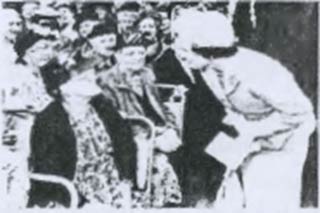
The Duchess of Gloucester visits holidaying pensioners at Broadstairs
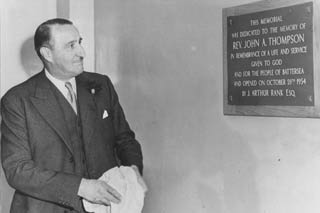
Lord Rank at Opening Ceremony
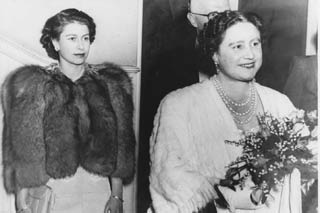
Princess Elizabeth and Queen Mother at Concert
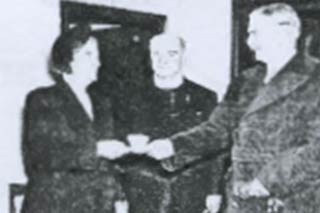
Mr. & Mrs. Thompson greet Sir Anthony Eden
Among the generous contributions to John Thompson's mission was a house in Broadstairs, given free to use at his discretion. He established this as a summer holiday home for children, and out of season used it as a convalescent home for elderly people.
The move towards providing accommodation continued after John Thompson's death in 1953, when Mrs. Thompson took over the mission and formally established the Memorial Trust.
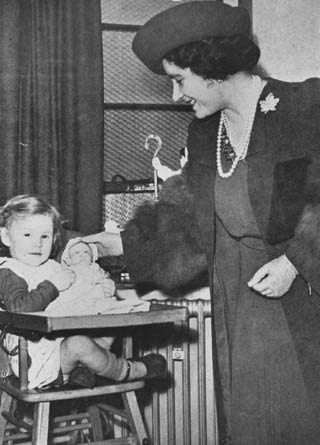
The Queen Mother and Child
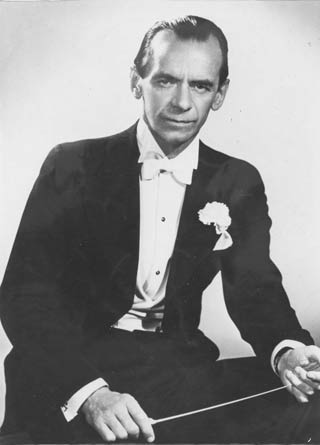
Sir Malcolm Sargent
Move To Southsea
As needs changed, and the requirement for sheltered housing became apparent, the Trust bought a house in Battersea for this purpose. Then, following a large donation, the house next door to it was acquired. Meanwhile, Broadstairs was felt to be 'too hilly' for older people, and Southsea was identified as an ideal alternative. This led to the purchase of 26 Festing Road as a new holiday centre.
The age of the houses in Battersea, and the nature of the accommodation they provided, led eventually to a decision to concentrate the Trust's efforts exclusively in Southsea.
Mrs. Thompson approached Lord Rank to ask for his support. Once again he responded with extreme generosity and kindness, enabling the Trust to purchase the nursing home which stood next door to 26 Festing Road. The site was re-developed as a block of purpose-built flats.
A couple of years later the house at 28 Festing Road was bought and converted into flats, together with the official Trust Office. Later came the chance to buy the house at 9 Craneswater Park, next to the purpose-built flats at 24 Festing Road, and its neighbour at 11 Craneswater Park.
Self-Contained
The Trust's buildings now form two sides of a square, with the gardens amalgamated to create a tranquil and secluded space for the enjoyment of residents and visitors. Today, these properties together offer 38 self-contained flats, supporting independent living.
As times and needs have changed, so has the John Thompson Memorial Trust.

